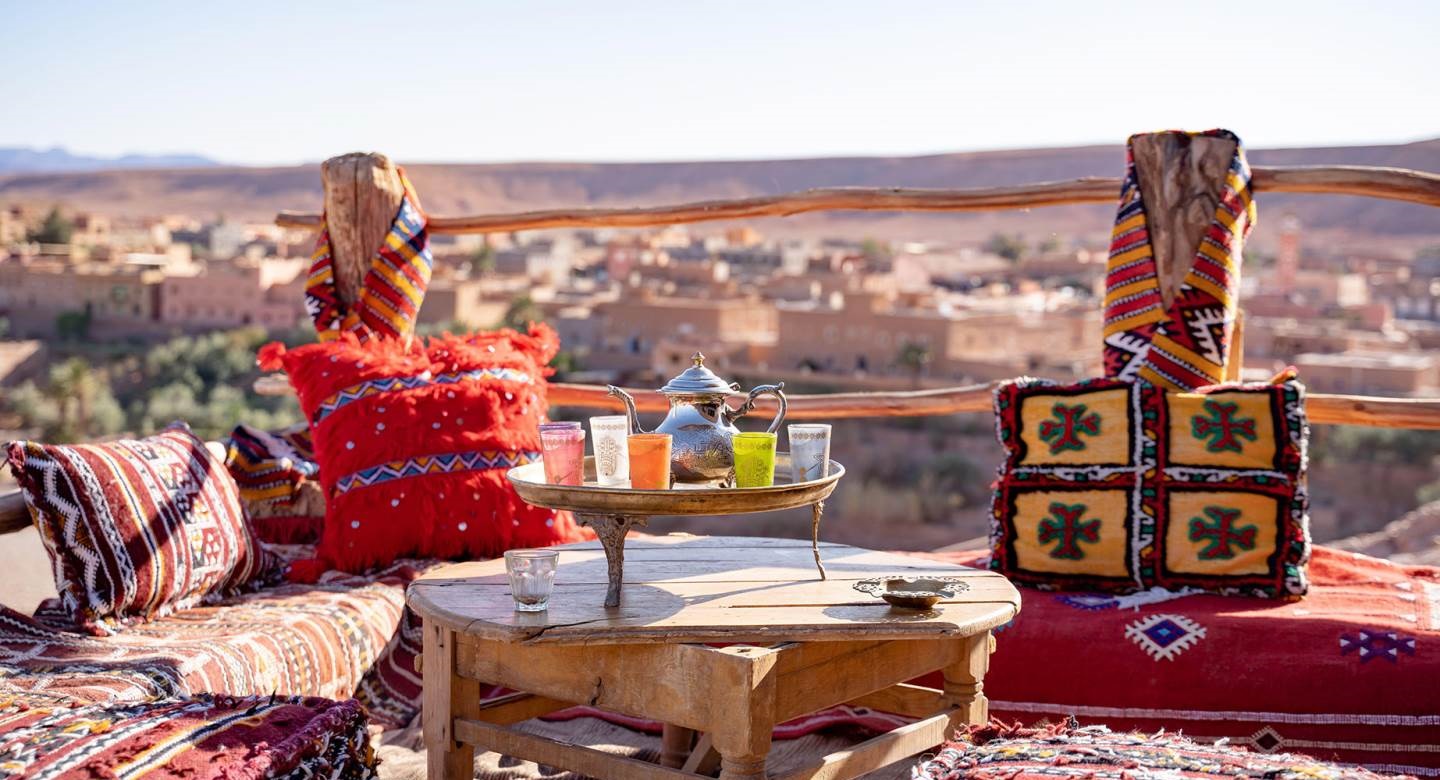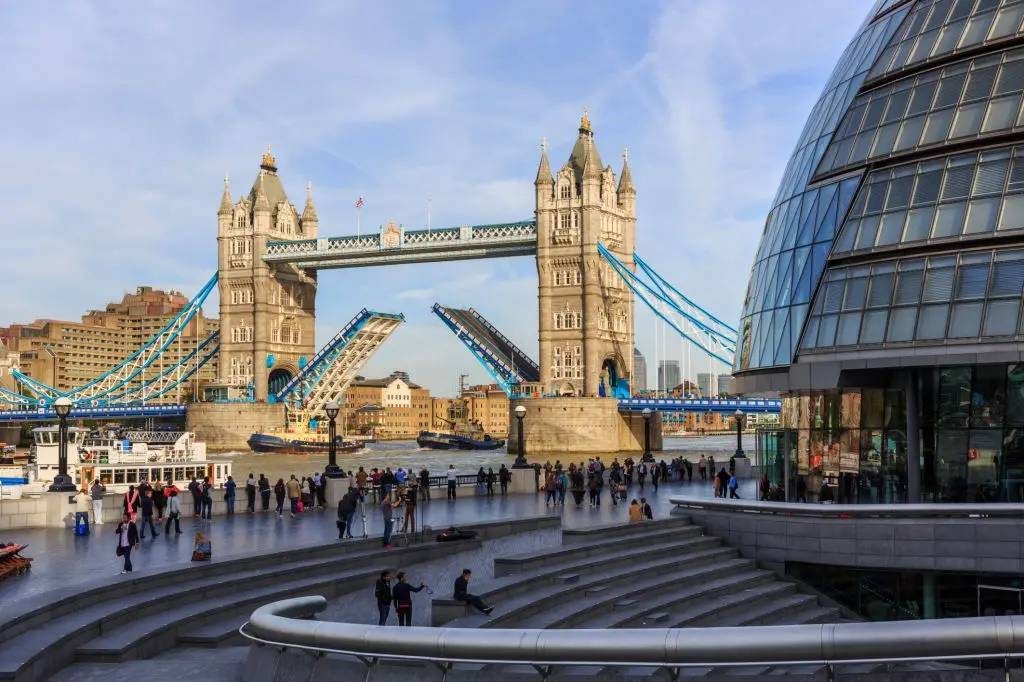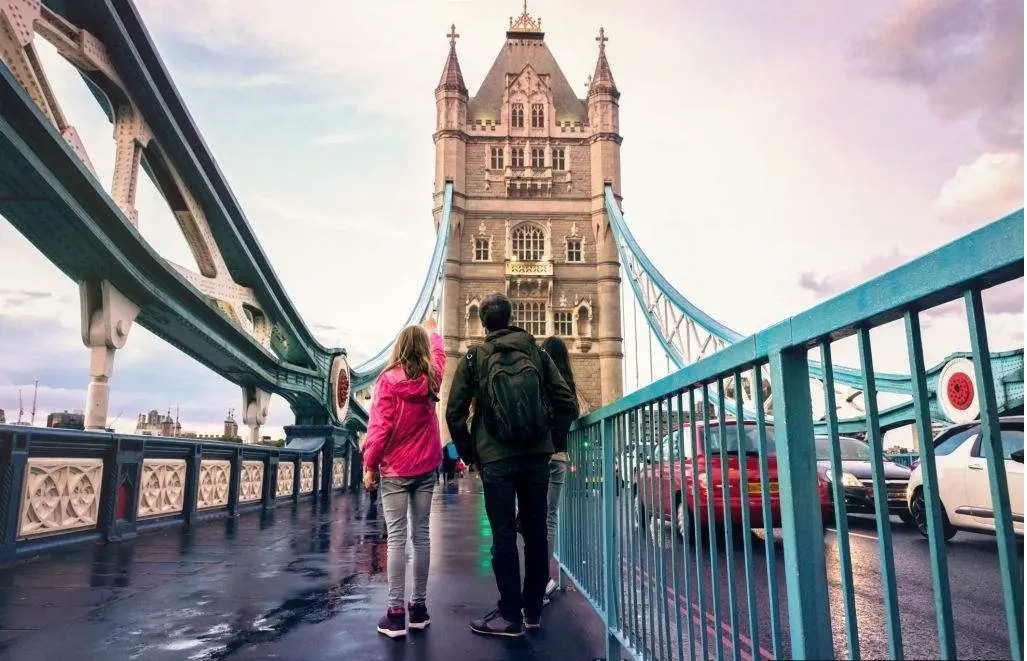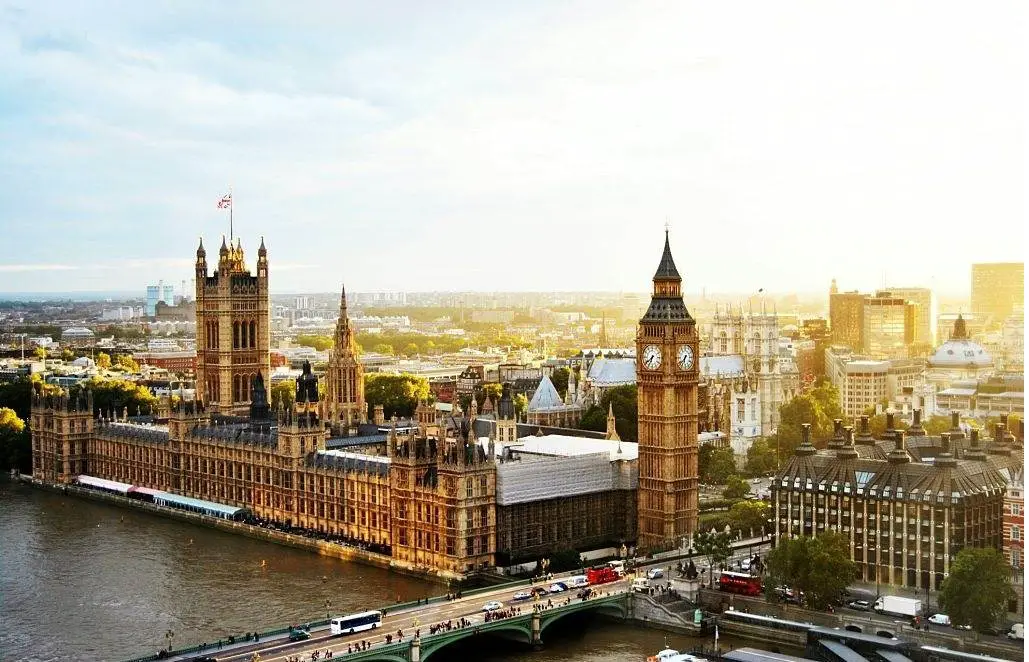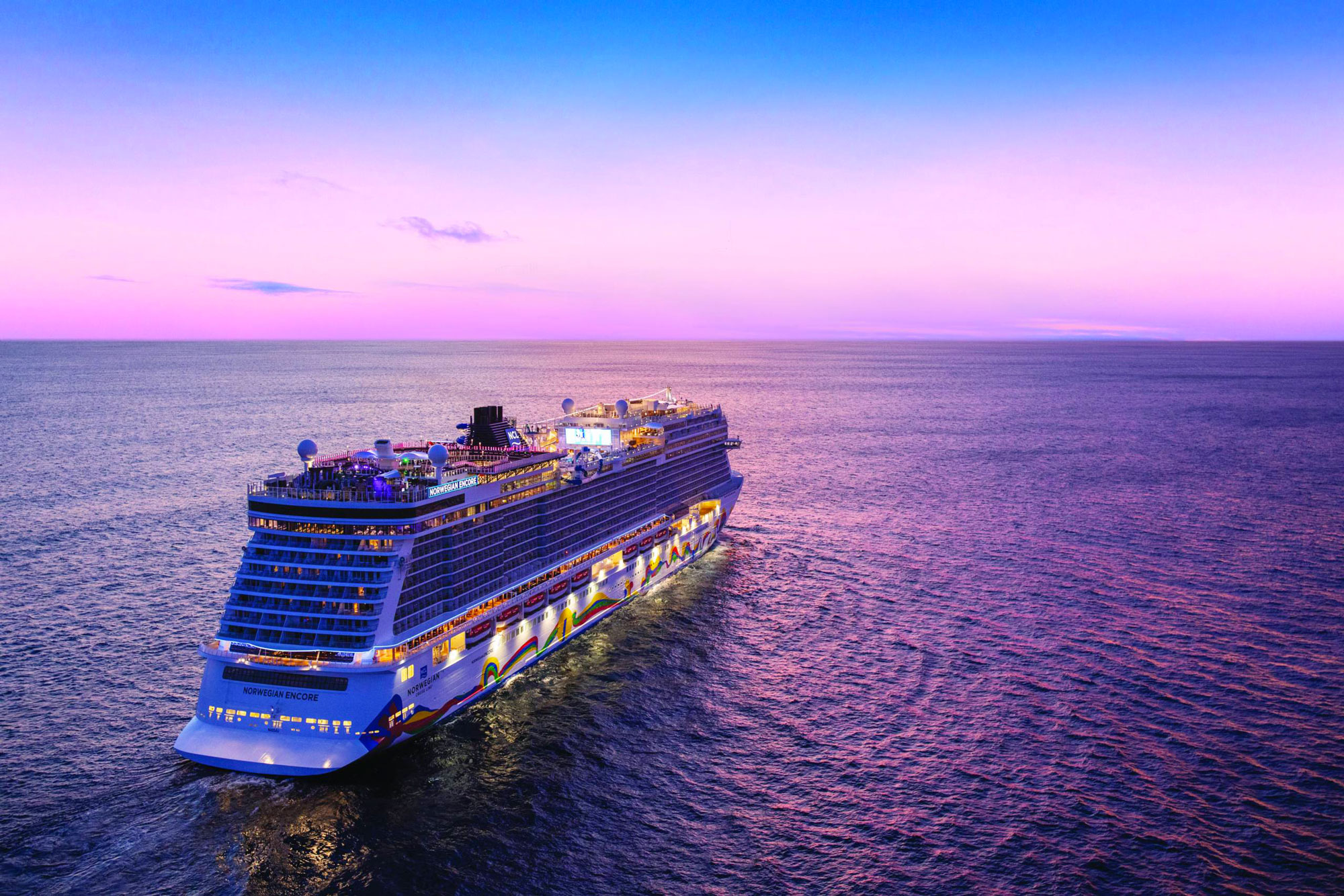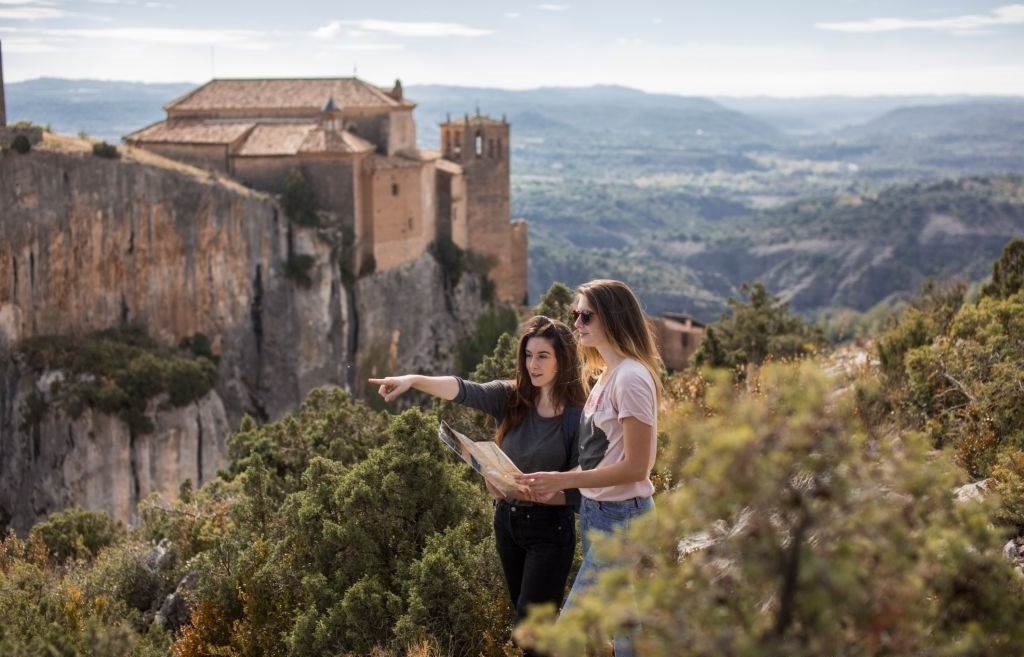Summary
- Morocco intertwines Middle Eastern echoes with a unique identity, evident in bustling souks, aromatic spices, and intricate artisanal crafts.
- Optimal times for visiting are autumn (September-November) and spring (end of January-April) due to favorable weather, balanced crowds, and accommodation prices.
- Spring showcases vibrant landscapes and pleasant weather; summer invites beachgoers but can get crowded; autumn offers mild temperatures for outdoor activities; winter provides a different, serene experience with fewer tourists.
Morocco, a vibrant gem in North Africa, shares a tapestry of cultural echoes with the Middle East while retaining its unique identity. Its bustling souks in Marrakech and Fes resonate with the lively markets throughout the Middle East, where spices perfume the air and artisans craft intricate wares. Yet, Morocco's distinct Berber, Arab, and European influences blend seamlessly in its architecture, cuisine, and traditions, creating a dynamic mosaic.
The Sahara's sweeping dunes mirror the vast deserts of the Middle East, evoking a sense of timeless wonder and beckoning travelers to explore their captivating landscapes. These experiences make Morocco one of the best destinations for travelers exploring different cities worldwide. These experiences make Marrakech one of the best cities to travel around the world, within the vibrant canvas of Morocco's cultural diversity.
When is the Best Time to Visit Morocco 2025?
The best time to visit Morocco in 2025 largely depends on your preferences and the specific experiences you seek. According to the recommendations of the PTA Team, it is advisable to plan your visit to Morocco during the autumn season, specifically from September to November, or during the spring season, which spans from the end of January to April. These periods are known for their perfect weather conditions and favorable balance between crowds and accommodation prices, making them ideal for many travelers. However, the best time to visit Morocco in 2025 ultimately depends on your preferences and specific needs. Here is a breakdown of the seasons to help you determine the best time for your visit:
Spring (March to May):
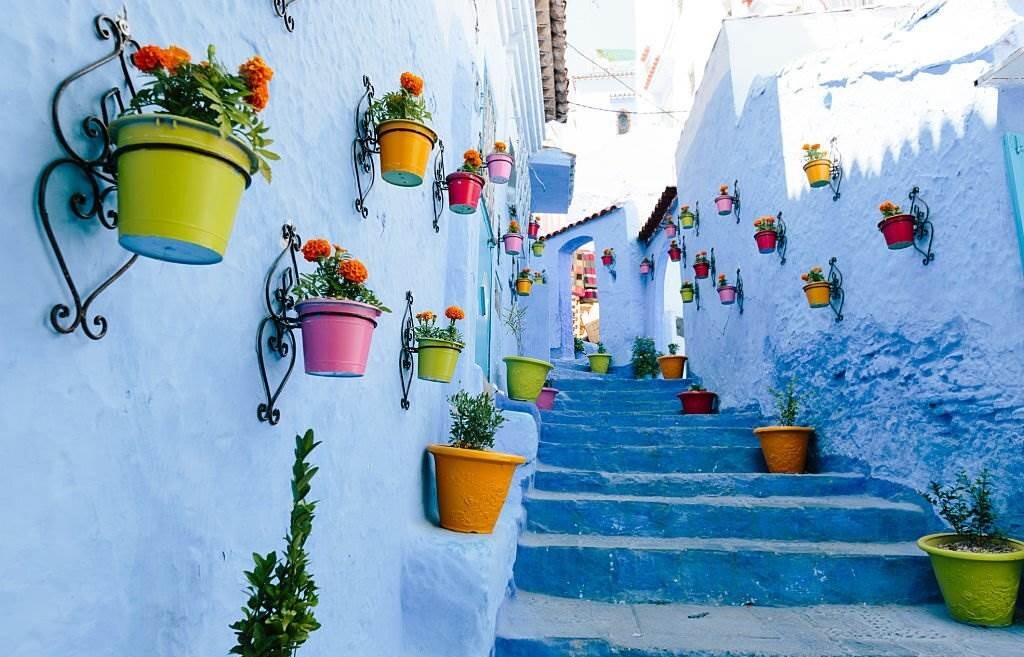
Spring is considered one of the best times to visit Morocco. The weather of Morocco is generally mild and pleasant, making it ideal for exploring cities, trekking in the mountains, and experiencing the desert. It's also when the landscapes come alive with colorful blooms, creating a vibrant and picturesque atmosphere.
Summer (June to August):
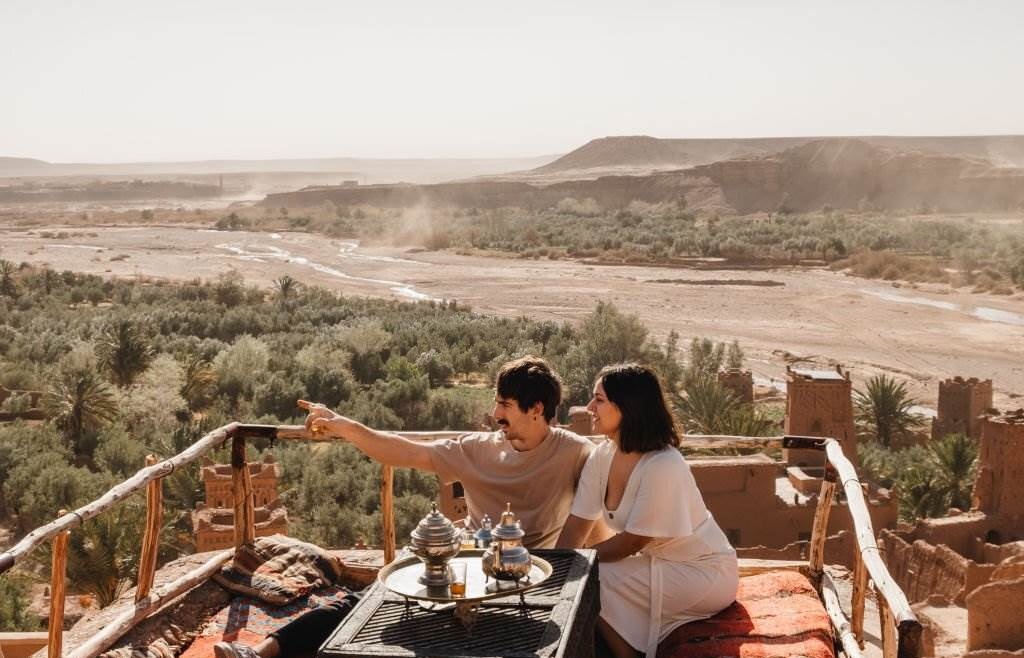
Summer in Morocco can be hot, especially in inland areas and the desert. However, coastal regions offer a refreshing escape with cooler temperatures. If you enjoy beach activities and water sports, summer is a great time to visit Morocco's coastal cities and enjoy the beautiful beaches. It's worth noting that popular tourist destinations can get crowded during this season.
Autumn (September to November):
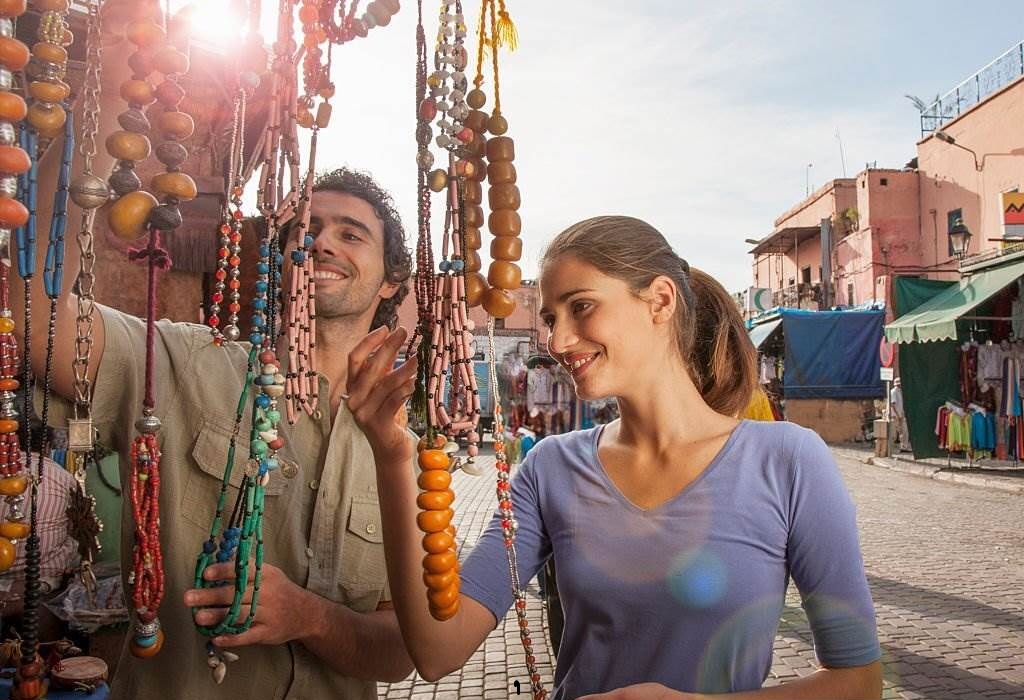
Autumn is another favorable time to visit Morocco. The temperatures start to cool down, making outdoor activities and sightseeing comfortable. It's a great season for exploring cities, hiking in the mountains, and experiencing the Sahara Desert without the extreme heat.
Winter (December to February):
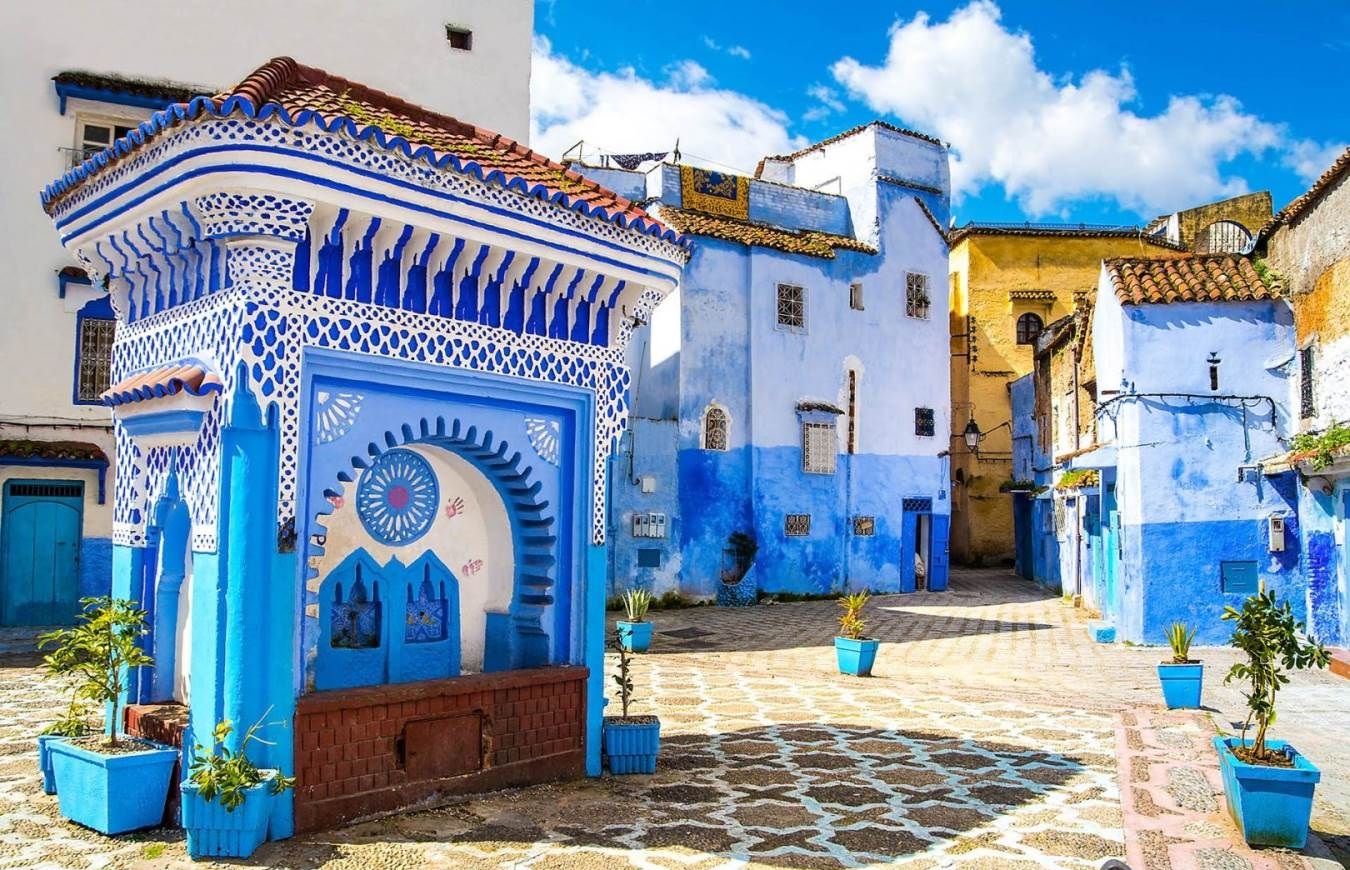
Winter in Morocco brings cooler temperatures, especially in the mountainous regions. It's a great time to visit, experience a different side of the country, and avoid crowds. The desert can be chilly this season but offers a unique and serene experience with fewer tourists.
Ultimately, the best time to visit Morocco depends on your personal preferences. If you prefer milder temperatures and want to explore various regions of the country comfortably, spring and autumn are generally considered the most favorable seasons. However, summer might be the best time if you are specifically interested in beach activities. Consider your desired activities, the climate, and the crowds you are comfortable with when deciding the best time for your visit to Morocco.
A Personal Perspective to Help You!
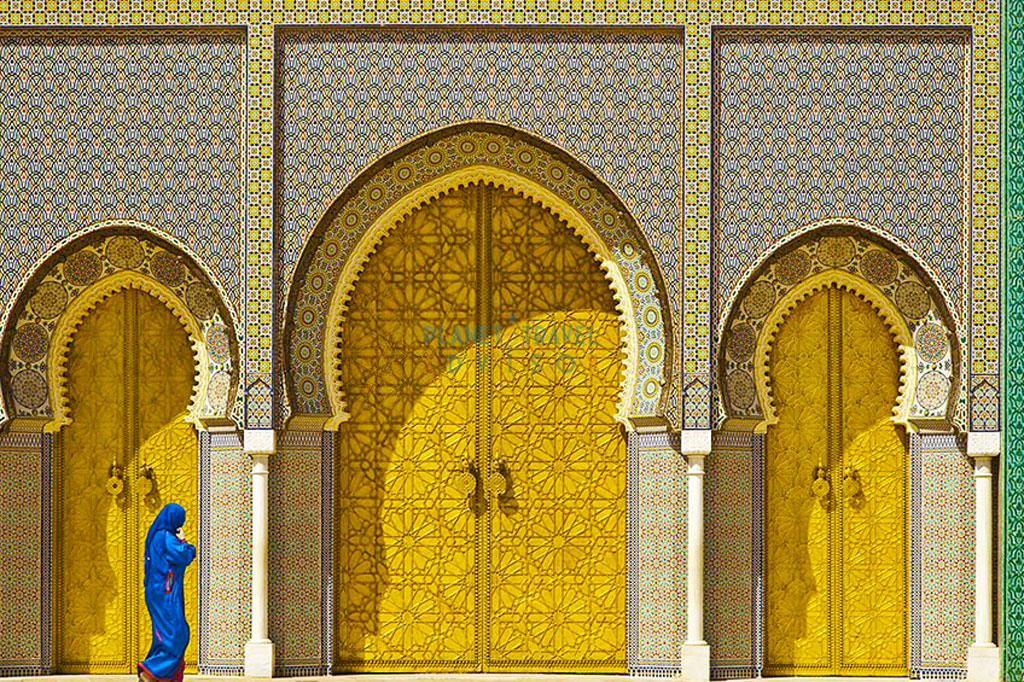
Morocco, a captivating North African country, offers travelers a tapestry of enchanting experiences. From bustling medinas and ancient cities to stunning landscapes that range from the golden dunes of the Sahara Desert to the majestic peaks of the Atlas Mountains, Morocco beckons with its rich history, vibrant culture, and warm hospitality. But before embarking on your Moroccan adventure, it's essential to understand the country's diverse climate and the best time to visit.
Between the Atlantic Ocean and the Mediterranean Sea, Morocco boasts a fascinating blend of climates influenced by its geographical features. The country can be divided into three central regions: coastal, mountainous, and the expansive Sahara Desert. Each region offers a unique experience and requires careful consideration when planning your visit.
The coastal regions enjoy a mild Mediterranean climate, including Casablanca, Rabat, and Essaouira. These areas are popular year-round destinations with pleasant temperatures and refreshing sea breezes. Warm temperatures and lively beach culture characterize summers, while mild winters often attract visitors seeking a respite from colder climates.
Venturing inland, the rugged landscapes of the Atlas Mountains unfold. These towering peaks offer breathtaking vistas and a haven for outdoor enthusiasts. Summers in the mountains bring comfortable temperatures and lush greenery, while winters transform the region into a snowy wonderland, ideal for skiing and snowboarding.
Perhaps the most iconic and mesmerizing aspect of Morocco is its Sahara Desert. Vast expanses of golden dunes stretch as far as the eye can see, creating a surreal and awe-inspiring landscape. The desert experiences scorching temperatures during the summer months, making it a challenging time to visit for some travelers. However, spring and autumn provide more moderate temperatures, allowing for a captivating desert experience without the intensity of the summer heat.
As you plan your journey to Morocco, it's crucial to consider the country's various climates and the experiences they offer. Consider your preferences, interests, and the activities you wish to engage in. Whether you're seeking cultural immersion, outdoor adventures, or a relaxing beach getaway, understanding the best time to visit each region will ensure you make the most of your Moroccan escapade.
In the following sections, we will delve into the specifics of Morocco's weather patterns, the ideal seasons for exploring its diverse landscapes, and the exciting festivals that take place throughout the year. Join us as we uncover the wonders of Morocco and guide you in choosing the perfect time to embark on your Moroccan odyssey.
Understanding Morocco's Weather Patterns: A Region-by-Region Breakdown
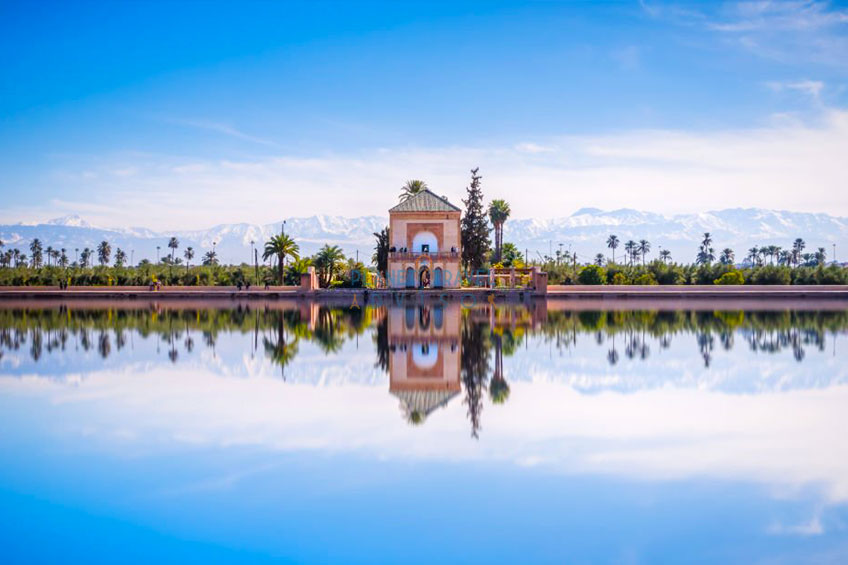
When planning a trip to Morocco, clearly understanding the country's diverse weather patterns is essential. From the coastal areas to the mountains and the desert, each region offers a unique climate that can significantly impact your travel experience. This section will provide a comprehensive breakdown of Morocco's weather by region, helping you choose the best time to visit each area.
Coastal Areas:
Morocco's coastal regions, including Casablanca, Tangier, and Essaouira, benefit from a Mediterranean climate. Summers are warm and dry, with temperatures ranging from the mid-20s to low 30s degrees Celsius (mid-70s to low 90s degrees Fahrenheit). It's the perfect time to enjoy the beautiful beaches and indulge in water sports. Winters are mild, with temperatures averaging in the mid-teens to low 20s degrees Celsius (low to mid-60s degrees Fahrenheit), making it a pleasant time to explore the coastal cities and take part in cultural activities.
Atlas Mountains:
The Atlas Mountains, a majestic range that stretches across Morocco, have a diverse climate due to their varying altitudes. In summer (June to August), temperatures in the mountains range from moderate to extraordinary, making it an excellent time for hiking, trekking, and exploring picturesque villages. Winter (December to February) brings colder temperatures; snowfall is expected in higher elevations. This period is ideal for winter sports enthusiasts, with opportunities for skiing and snowboarding in popular resorts like Oukaimeden and Ifrane.
Sahara Desert:
The Sahara Desert, an iconic part of Morocco's landscape, experiences extreme temperatures throughout the year. Summers (June to August) are scorching hot, with daytime temperatures soaring well above 40 degrees Celsius (100 degrees Fahrenheit). Travelers looking to experience the desert should consider visiting in spring (March to May) or autumn (September to November), when temperatures are more moderate and range from the mid-20s to low 30s degrees Celsius (mid-70s to low 90s degrees Fahrenheit). These seasons offer more comfortable conditions for camel trekking and spending nights under the stars in desert camps.
Inland Regions:
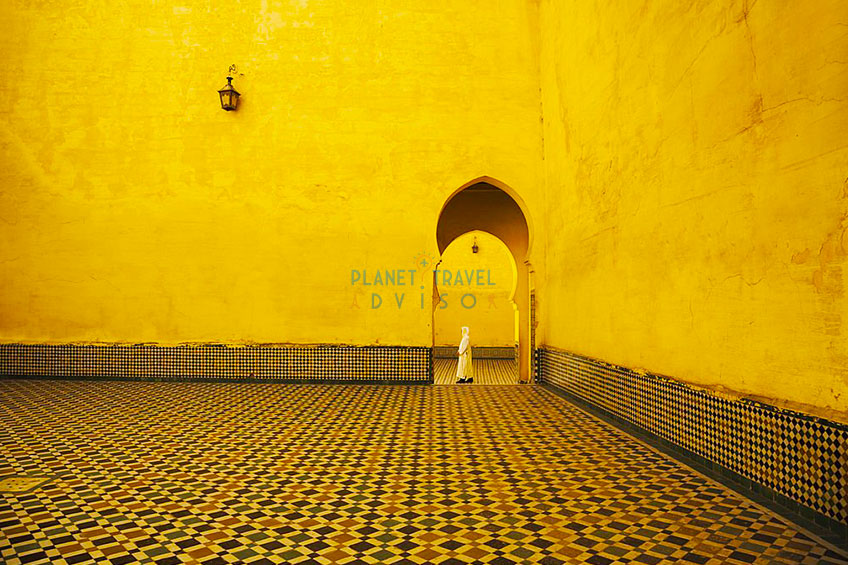
Morocco's inland regions, such as Marrakech and Fes, have a semi-arid climate. Summers (June to August) can be hot, often exceeding 35 degrees Celsius (95 degrees Fahrenheit). Winters (December to February) are more excellent but still mild, with daytime temperatures ranging from the mid-teens to low 20s degrees Celsius (low to mid-60s degrees Fahrenheit). Spring (March to May) and autumn (September to November) are generally considered the best times to visit these cities, as temperatures are pleasant for exploring the historic sites, wandering through the bustling medinas, and immersing yourself in the vibrant local culture.
By understanding the weather patterns in each region, you can plan your visit to Morocco accordingly, ensuring that you make the most of your time and enjoy comfortable conditions for your desired activities. The following sections will explore the ideal seasons for exploring specific attractions and highlight the exciting festivals that can enhance your Moroccan experience.
Springtime Splendor: Embracing Morocco's Beauty in the Months of March to May
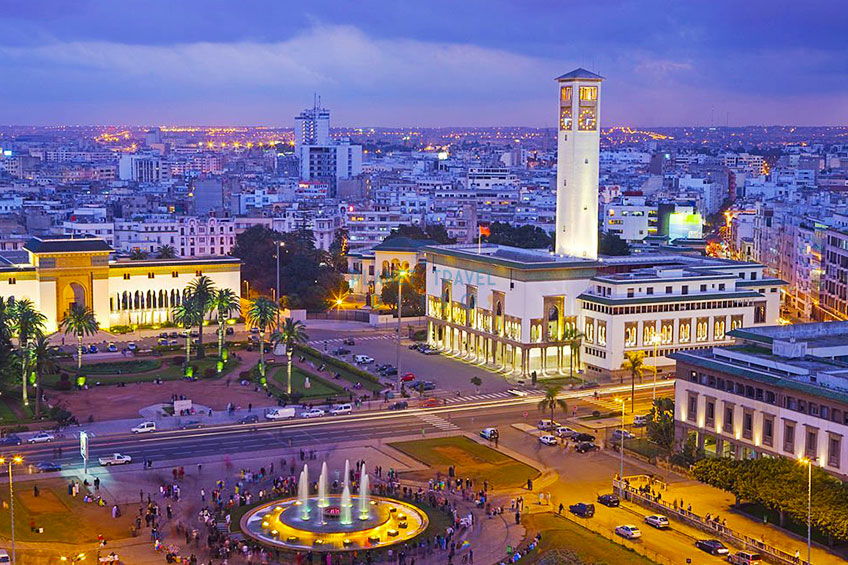
As winter fades away and nature awakens, Morocco blooms into a breathtaking tapestry of colors and scents during spring. From March to May, this period of rejuvenation offers an ideal time to explore the country's diverse landscapes and cultural treasures. This section will delve into the enchanting experiences that await visitors during Morocco's springtime splendor.
Pleasant Weather:
Spring in Morocco brings mild and pleasant weather, with temperatures ranging from the mid-teens to mid-20s degrees Celsius (high 50s to high 70s degrees Fahrenheit) in most regions. The scorching heat of the summer is yet to arrive, making it a suitable time for outdoor activities, sightseeing, and exploring Morocco's vibrant cities and natural wonders.
Vibrant Flora and Gardens:
The arrival of spring breathes life into Morocco's flora, transforming the landscapes into a riot of colors. The famous Majorelle Garden in Marrakech, blooming exotic plants and vibrant blue structures, becomes a visual feast for visitors. The Andalusian Gardens in Rabat and the coastal town of Asilah also showcase beautiful flower displays during this time, creating picture-perfect settings for strolls and peaceful moments.
Majestic Mountains:
Spring is an excellent time to venture into Morocco's majestic Atlas Mountains. As the snow melts, the valleys and trails come alive with fresh greenery and blossoming wildflowers. Hiking enthusiasts can embark on rewarding treks, exploring the stunning gorges, picturesque villages, and panoramic vistas the mountains offer. Places like the Ourika Valley, Imlil, and the High Atlas Mountains reveal their true splendor, welcoming outdoor enthusiasts to embrace their natural beauty.
Cultural Festivals:
Springtime in Morocco is marked by several captivating cultural festivals celebrating music, arts, and traditions. One of the most notable events is the Fes Festival of World Sacred Music, held annually in May. This festival brings together renowned musicians worldwide, offering a unique opportunity to experience a fusion of different musical traditions and spiritual performances in the historic city of Fes.
Exploring the Cities:
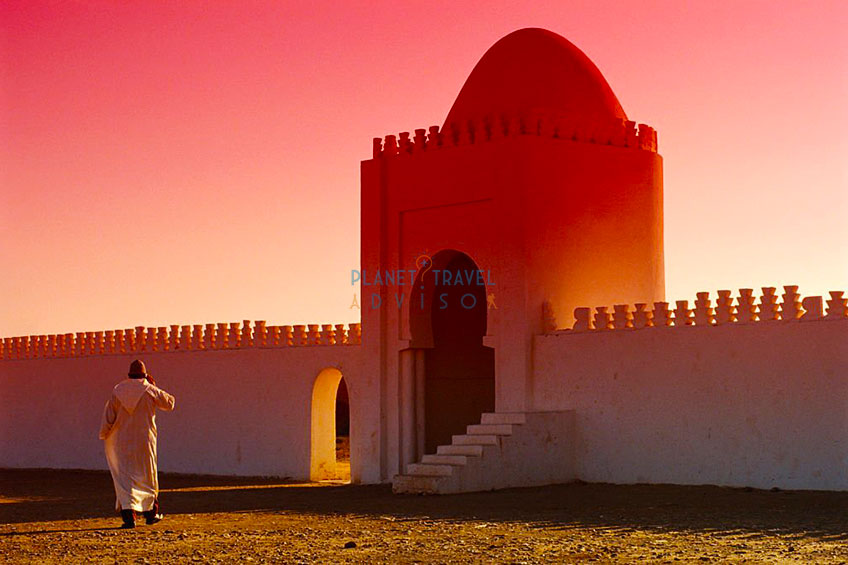
Spring provides an ideal climate for exploring Morocco's vibrant cities. Marrakech's bustling medina, with its souks, historic palaces, and the iconic Djemaa el-Fna square, is a must-visit. The imperial cities of Fes, Meknes, and Rabat also offer a rich tapestry of history and cultural attractions, such as medieval medinas, ancient monuments, and royal palaces. With milder temperatures, you can fully immerse yourself in the charm and authenticity of these urban centers.
Coastal Charms:
Morocco's picturesque coastal towns, including Essaouira, Casablanca, and Agadir, beckon visitors with their pristine beaches, refreshing sea breezes, and laid-back ambiance. The coastal areas experience comfortable temperatures in spring, making it an ideal time for beachside relaxation, water sports, and seaside dining.
Springtime in Morocco is magical when the country blossoms into a captivating destination. Whether you seek cultural immersion, outdoor adventures, or a tranquil escape, March to May offers the perfect balance of favorable weather, natural beauty, and cultural experiences. Embrace Morocco's springtime splendor and create unforgettable memories in this enchanting North African gem.
Summer Adventures: Experiencing the Magic of Morocco from June to August
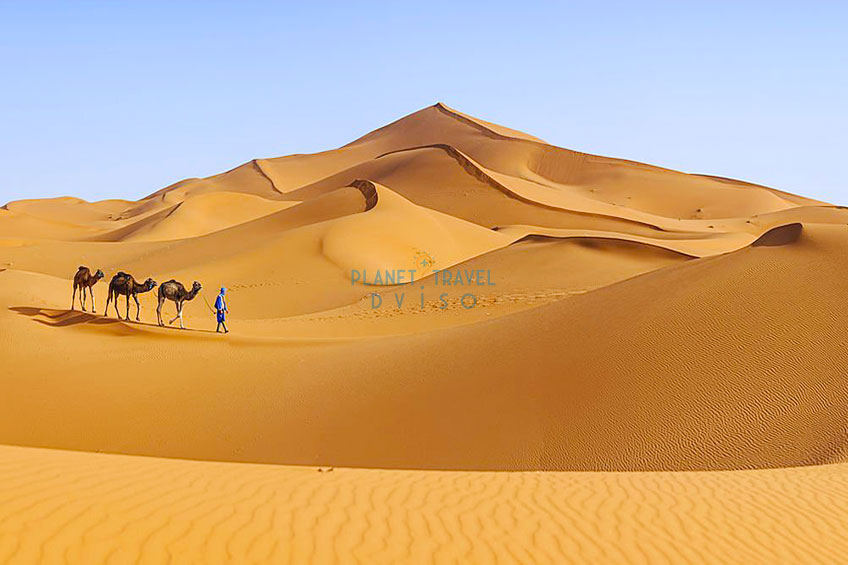
When the summer sun graces Morocco with its warmth, a world of adventure and enchantment awaits travelers. From June to August, the country reveals its vibrant spirit, welcoming visitors with open arms. In this section, we will explore the magic of Morocco during the summer season and the exciting adventures that await those who choose to explore its wonders.
Sunny and Warm Weather:
Summer in Morocco brings abundant sunshine and warm temperatures, making it an ideal time to embrace outdoor activities and soak up the sun. Coastal regions like Casablanca, Essaouira, and Agadir experience refreshing sea breezes, offering a respite from the heat. Inland cities such as Marrakech and Fes can be hot, but their vibrant atmosphere and rich cultural heritage make them irresistible destinations.
Coastal Escapes:
Morocco's picturesque coastline offers an array of summer delights. From the golden sandy beaches to the crystal-clear waters of the Atlantic Ocean, coastal towns like Essaouira, Tangier, and Asilah beckon beach lovers and water sports enthusiasts. Enjoy sunbathing, swimming, surfing, or simply unwinding with a refreshing drink by the shore.
Mountain Retreats:
While the valleys and cities of Morocco might experience warm temperatures, the majestic Atlas Mountains provide a cool and refreshing escape. Enjoy the pleasant weather to explore the stunning mountain trails, visit traditional Berber villages, and revel in breathtaking panoramic views. Immerse yourself in the natural beauty of destinations like the Ourika Valley, Toubkal National Park, or the charming town of Chefchaouen.
Cultural Immersion:

Summer in Morocco is a vibrant time when the streets come alive with festivals and cultural events. The city of Marrakech hosts the famous Marrakech Popular Arts Festival, showcasing traditional music, dance, and storytelling. It's an opportunity to immerse yourself in the rich cultural heritage of Morocco and witness captivating performances by local artists.
Sahara Desert Exploration:
For those seeking a unique and adventurous experience, summer offers a chance to venture into the Sahara Desert. While the days can be hot, the allure of the mesmerizing dunes and the magical ambiance of desert camps under starry skies make it a worthwhile journey. Enjoy camel trekking, witness stunning sunsets over the dunes, and engage in Berber traditions and hospitality.
Night Markets and Food Festivals:
Summer nights in Morocco are a feast for the senses. Visit the bustling night markets, known as "Souks," where you can indulge in delectable street food, shop for traditional crafts, and immerse yourself in the vibrant atmosphere. Cities like Marrakech and Fes are known for their lively night markets, offering a blend of sights, sounds, and flavors that create an unforgettable experience.
Whether you're seeking coastal bliss, mountain serenity, cultural immersion, or desert adventures, Morocco offers many possibilities in the summer. Embrace the country's magic as you create cherished memories and embark on thrilling summer adventures that will stay with you long after the season disappears.
Autumn Delights: Unveiling Morocco's Charms from September to November
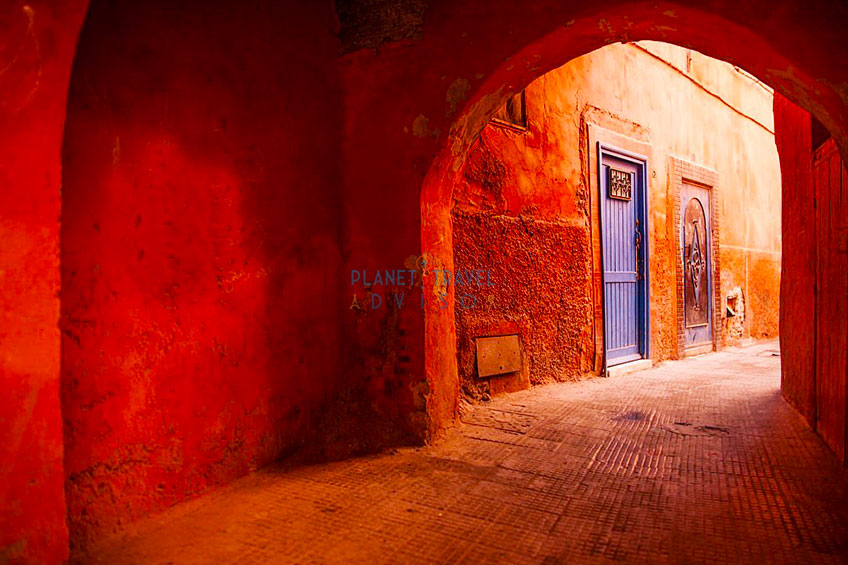
As summer gives way to the golden hues of autumn, Morocco transforms into a captivating destination, revealing its unique charms and delights. From September to November, this season brings milder temperatures, a vibrant atmosphere, and a tapestry of colors, making it an ideal time to explore the country. In this section, we will uncover the enchanting experiences that await visitors during Morocco's autumn delights.
Mild and Pleasant Weather:
Autumn in Morocco offers a welcome respite from the summer heat. Temperatures begin to cool down, ranging from the mid-teens to mid-20s degrees Celsius (high 50s to high 70s degrees Fahrenheit) in most regions. The comfortable weather creates an enjoyable environment for outdoor activities, sightseeing, and immersing oneself in Morocco's cultural treasures.
Rich Cultural Festivals:
Autumn is a season of vibrant festivals and cultural celebrations in Morocco. One of the most famous events is the Erfoud Date Festival, held in October, which showcases the country's love for dates, an essential part of Moroccan cuisine. The Rose Festival in the Dades Valley, also in October, celebrates the blooming of roses with parades, music, and traditional dances. These festivals offer a glimpse into Moroccan traditions, culinary delights, and local customs.
Harvest Season:
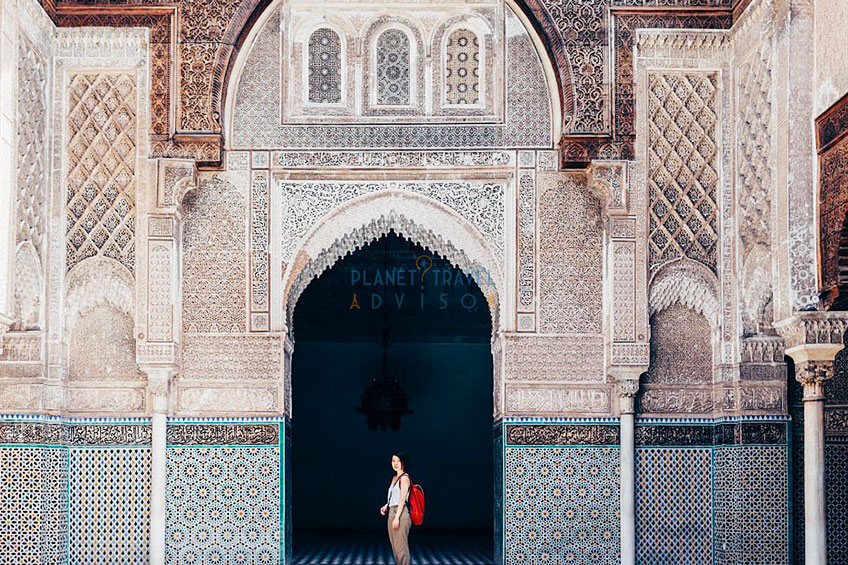
Autumn marks the harvest season in Morocco, with abundant fruits, vegetables, and culinary delights. Exploring local markets during this time allows you to indulge in the freshest produce and traditional dishes made with seasonal ingredients. Don't miss the opportunity to savor delicious Moroccan cuisines, such as tagines, couscous, and pastries infused with autumn flavors.
Vibrant Landscapes:
The landscapes of Morocco come alive with breathtaking beauty during autumn. From the lush green valleys of the Atlas Mountains to the changing colors of the foliage, the scenery is a feast for the eyes. Explore the picturesque towns of Chefchaouen and Asilah, where the blue and white buildings contrast with the surrounding autumnal colors. Venture into the stunning Todra Gorge or the Ourika Valley, where vibrant autumn hues and cascading waterfalls create a tranquil oasis.
City Exploration:
Morocco's vibrant cities, with their historic medinas and architectural wonders, are perfect for autumn exploration. The bustling streets of Marrakech, Fes, and Rabat come alive with renewed energy. Visit the iconic landmarks, wander through the labyrinthine alleys of the medinas, and discover hidden gems more leisurely as the summer crowds have started to thin out.
Sahara Desert Magic:
Autumn offers a magical time to experience the Sahara Desert. The scorching summer temperatures have subsided, creating more comfortable conditions for camel treks and nights spent under a star-studded sky in desert camps. Explore the towering dunes, witness mesmerizing sunsets, and immerse yourself in the tranquility of the vast desert landscapes.
Autumn in Morocco is a season of delightful contrasts, with pleasant weather, rich cultural experiences, and captivating landscapes. Whether seeking cultural immersion, outdoor adventures, or a tranquil escape, September to November unveils Morocco's authentic charms. Embrace the beauty of this enchanting season as you create lasting memories in this remarkable North African destination.
Winter Wonders: Embracing the Chilly Magic of Morocco from December to February
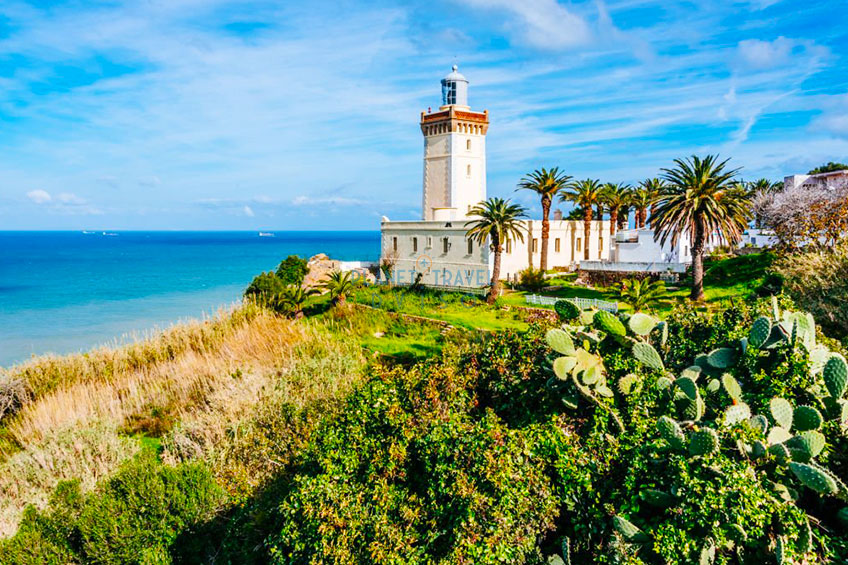
When winter blankets Morocco in its cool embrace, a different kind of magic unfolds. From December to February, the country reveals a unique charm, blending cultural experiences, breathtaking landscapes, and cozy moments by crackling fires. In this section, we will explore the winter wonders of Morocco and the enchanting experiences that await those who embrace the chilly season.
Mild Winter Climate:
Morocco's winters are generally mild, making it an inviting destination for those seeking a reprieve from harsher winter conditions. Coastal regions like Casablanca, Essaouira, and Agadir experience pleasant temperatures, ranging from the mid-teens to low 20s degrees Celsius (low to mid-60s degrees Fahrenheit). Inland cities such as Marrakech and Fes are cooler but still enjoy daytime temperatures averaging in the mid-teens degrees Celsius (low 60s degrees Fahrenheit), creating a comfortable environment for exploration.
Festive Atmosphere:
Winter in Morocco brings a festive atmosphere, with celebrations and events that add a special touch to your visit. In December, you can experience the vibrant festivities of Christmas and New Year's Eve in major cities like Marrakech and Casablanca. Traditional markets come alive with holiday decorations, music, and street performances, offering a unique blend of Moroccan culture and seasonal cheer.
Snow-Capped Atlas Mountains:
Winter is an ideal time to visit the Atlas Mountains, as the higher elevations are dusted with snow, creating a picturesque winter wonderland. Oukaimeden, the highest ski resort in Africa, attracts winter sports enthusiasts who can enjoy skiing, snowboarding, and other snow-related activities. Even if you're not into winter sports, the majestic landscapes and charming mountain villages, such as Imlil and Ait Ben Haddou, offer stunning vistas and a tranquil escape from the bustling cities.
Desert Tranquility:
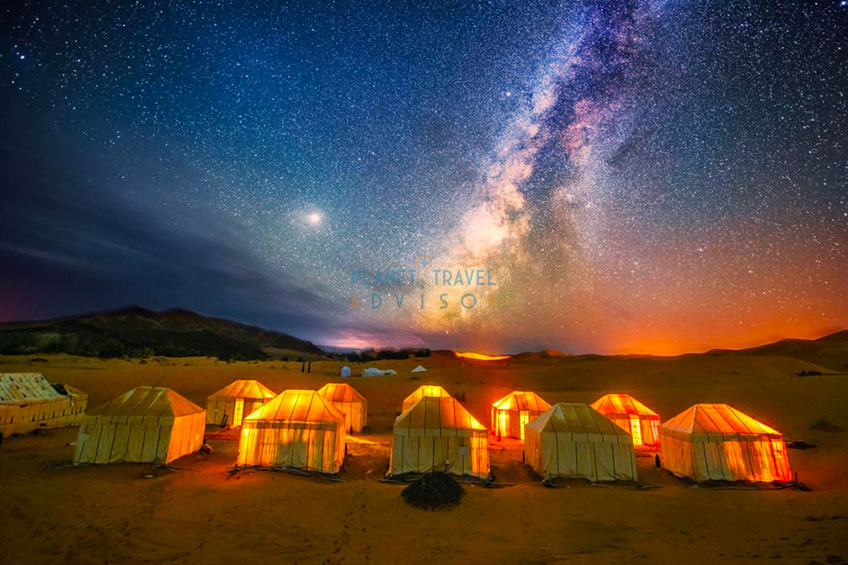
While Morocco's deserts can be chilly during winter nights, the daytime temperatures are generally pleasant for exploration. The Sahara Desert unveils a different kind of allure this season, with crisp air and fewer crowds. Embark on a camel trek across the golden dunes, witness the ethereal beauty of sunrise and sunset, and spend cozy nights in desert camps, surrounded by tranquility and a sky filled with countless stars.
Cultural Immersion:
Winter provides an excellent opportunity to delve into Morocco's rich cultural heritage. Visit the imperial cities of Fes and Marrakech, where historic palaces, vibrant medinas, and traditional riads exude an authentic charm. Explore the intricately designed mosques, wander through ancient medinas, and indulge in the flavors of Moroccan cuisine at cozy restaurants. The quieter streets allow a deeper connection with the local culture and a more immersive experience.
Hammam Retreats:
Winter is the perfect time to indulge in the soothing relaxation of a traditional Moroccan hammam. These steam baths and spas offer a rejuvenating escape from the winter chill, allowing you to unwind and pamper yourself with luxurious treatments. Experience the ancient traditions of self-care and enjoy the warm, comforting ambiance of the hammam.
Winter in Morocco unveils a serene and captivating side of the country. Whether you're seeking cultural immersion, mountain adventures, or tranquil moments in the desert, December to February offers a unique opportunity to embrace the winter magic of this remarkable North African gem. Wrap yourself in the warmth of Moroccan hospitality and create cherished memories as you explore the winter wonders that await you.
Festival Fever: Must-Attend Cultural Events in Morocco Throughout the Year
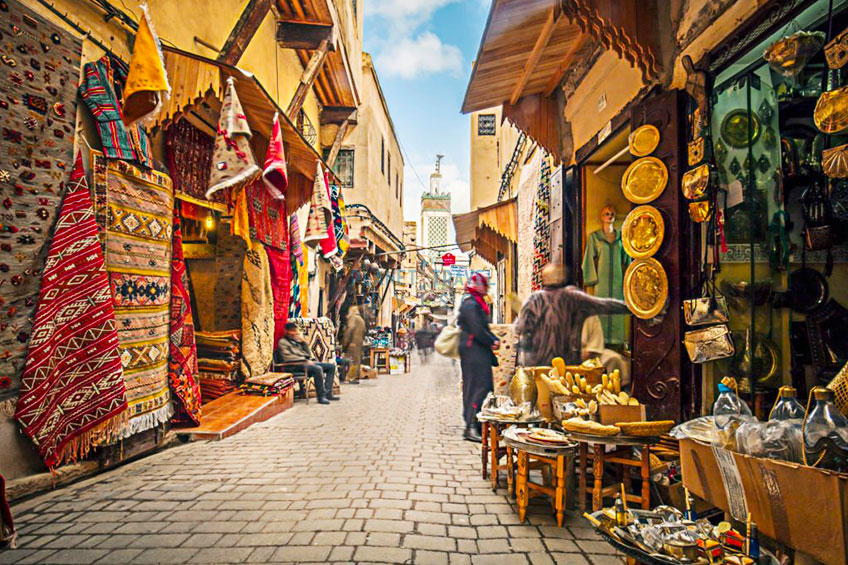
Morocco is a country deeply rooted in rich cultural traditions, and throughout the year, it comes alive with vibrant festivals and celebrations that showcase its diverse heritage. From music and dance to religious rituals and historical events, these cultural gatherings offer a unique insight into Moroccan traditions and provide an unforgettable experience for visitors. In this section, we will highlight some of the must-attend cultural events in Morocco that take place throughout the year.
Fes Festival of World Sacred Music (May/June):
The Fes Festival of World Sacred Music is a renowned annual event in Fes. This festival brings together musicians and artists from around the world to celebrate the spiritual power of music. The performances occur in various historic venues, including the stunning Bab Al Makina and Batha Museum. It's a truly immersive experience that combines captivating music, traditional rituals, and the enchanting ambiance of Fes.
Marrakech Popular Arts Festival (July):
The Marrakech Popular Arts Festival is a vibrant celebration of Moroccan arts and culture in the heart of Marrakech. The festival showcases traditional music, dance, storytelling, and other performing arts, captivating audiences with colorful parades and lively street performances. Visitors can witness local talents and immerse themselves in the vibrant atmosphere of this cultural extravaganza.
Erfoud Date Festival (October):
The Erfoud Date Festival is a unique event that celebrates the importance of dates in Moroccan culture. Held in Erfoud, known for its date palm groves, the festival features traditional music, dance performances, and culinary delights centered around dates. It offers visitors the opportunity to learn about the significance of dates in Moroccan cuisine and traditions while also enjoying the lively festivities.
Rose Festival (May):
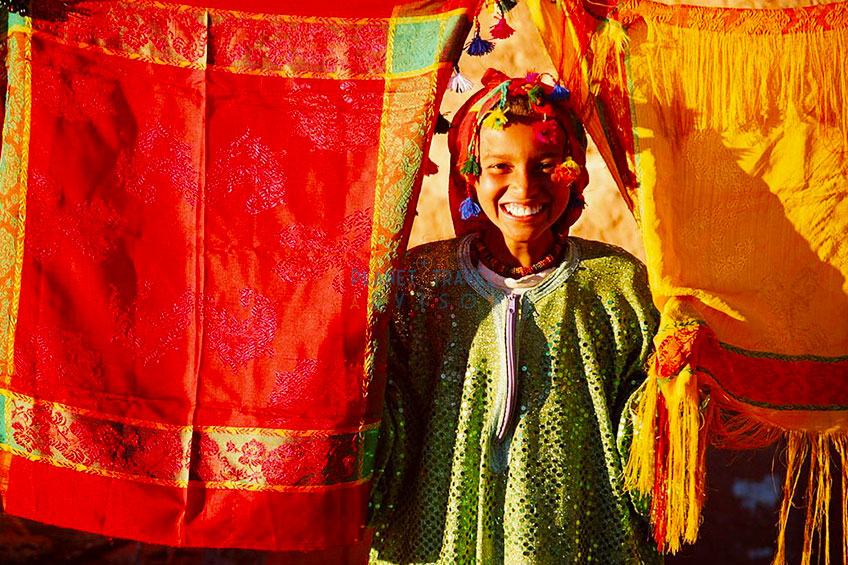
The Rose Festival occurs in the Dades Valley, a region known for its picturesque rose fields. This annual festival celebrates the blooming of roses with parades, music, and traditional dances. Visitors can witness the harvesting of roses and learn about the production of rose-based products, such as rose water and rose oil. The festival is a sensory delight, with the fragrance of roses filling the air and vibrant cultural displays.
Imilchil Marriage Festival (September):
The Imilchil Marriage Festival, also known as "Souk Aam," is a unique event that brings together the local Amazigh community. Held in the High Atlas Mountains, the festival revolves around the ancient "Mass Wedding" ceremony tradition, where couples from different tribes come together to exchange vows. It's a fascinating cultural experience, showcasing traditional clothing, music, and dance, as well as the vibrant traditions and customs of the Amazigh people.
Gnaoua World Music Festival (June):
The Gnaoua World Music Festival, held annually in Essaouira, celebrates the unique music and spiritual traditions of the Gnaoua people. This four-day event brings together local Gnaoua musicians and international artists for a captivating fusion of traditional Gnaoua music with various contemporary music genres. The festival attracts music lovers worldwide, offering a lively atmosphere and memorable performances.
These are just a few examples of the cultural events that occur throughout the year in Morocco. The country's festival calendar is filled with many other celebrations, including religious festivals such as Eid al-Fitr and Eid al-Adha, regional events, and historical commemorations. Attending these festivals allows visitors to immerse themselves in the vibrant cultural tapestry of Morocco, creating lasting memories and forging connections with the local traditions and communities.
Exploring the Coastal Charms: Best Time to Enjoy Morocco's Beaches and Coastal Cities
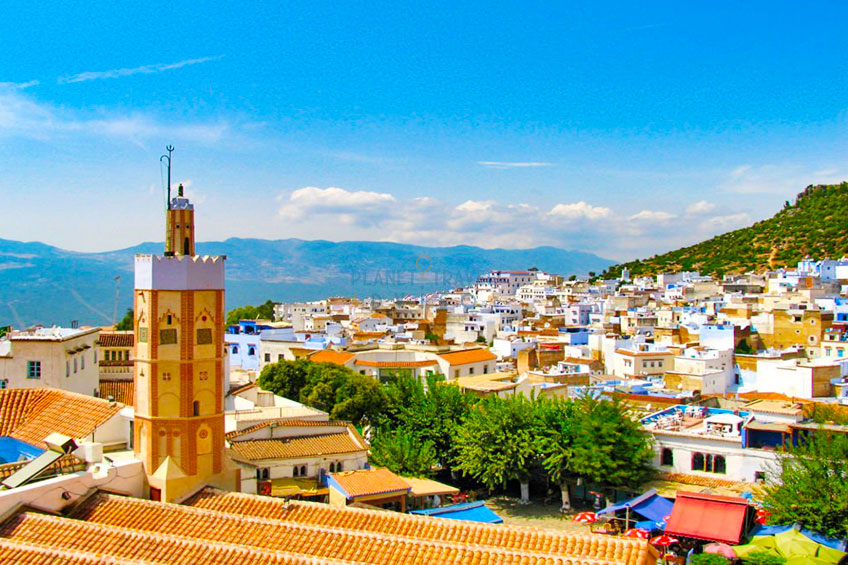
Morocco's stunning coastline stretches along the Atlantic and Mediterranean Seas, offering many beautiful beaches and captivating coastal cities. Whether you seek sun-soaked relaxation, exhilarating water sports, or vibrant seaside culture, the coastal regions of Morocco have something for everyone. This section will guide you through the best time to enjoy Morocco's beaches and coastal cities, ensuring you make the most of your coastal adventure.
Summer Splendor (June to August):
During the summer months of June to August, Morocco's coastal regions experience warm and pleasant weather, making it an ideal time for beach lovers. Cities like Casablanca, Agadir, Essaouira, and Tangier bask in the sunshine, with temperatures ranging from the mid-20s to low 30s degrees Celsius (mid-70s to low 90s degrees Fahrenheit). This is the perfect time to indulge in sunbathing, swimming in the refreshing waters, and engaging in thrilling water sports such as surfing, windsurfing, and kitesurfing. The lively beach atmosphere and vibrant seaside culture make it a popular season for locals and tourists.
Spring Bliss (March to May):
Spring is another favorable season to enjoy Morocco's coastal delights. From March to May, the weather begins to warm up, with temperatures ranging from the mid-teens to low 20s degrees Celsius (low to mid-70s degrees Fahrenheit). The coastal cities come alive with blossoming flowers and a refreshing sea breeze. It's an excellent time for leisurely beach walks, exploring charming seaside towns like Essaouira and Asilah, and immersing yourself in the unique blend of Moroccan and European influences along the coastline.
Mild Autumn (September to November):
Autumn offers a pleasant and less crowded time to enjoy Morocco's beaches and coastal cities. From September to November, the temperatures start to cool down slightly, ranging from the mid-teens to low 20s degrees Celsius (low to mid-70s degrees Fahrenheit). This season is ideal for beachcombing, admiring picturesque sunsets, and taking long walks along the shore. Coastal cities like Casablanca, Rabat, and Agadir maintain a relaxed atmosphere, allowing you to savor the coastal charm without the peak summer crowds.
Winter Retreat (December to February):
While Morocco's winter might not be beach weather for everyone, it still offers a unique coastal experience. The temperatures along the coast range from the mid-teens to the low 20s degrees Celsius (low to mid-70s degrees Fahrenheit), providing a mild and comfortable climate. Winter is the perfect time to explore cities like Essaouira, with its dramatic coastline and charming medina, or Tangier, known for its artistic and bohemian vibe. You can enjoy invigorating seaside walks, savor fresh seafood delicacies, and immerse yourself in these coastal cities' cultural and historical gems.
Year-Round Surfer's Paradise:
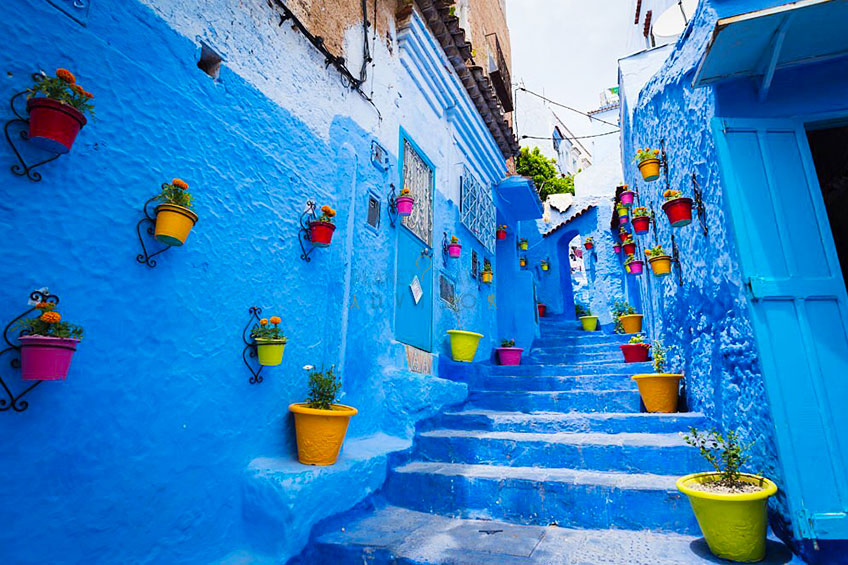
For surf enthusiasts, Morocco's coastline is a paradise that can be enjoyed throughout the year. The country's Atlantic coast, particularly regions like Taghazout and Mirleft, offers consistent swells and excellent surf conditions. While the water might be more incredible during winter, the waves are often at their best, attracting surfers worldwide. For those seeking an exhilarating surf experience, the best time to hit the waves is during autumn and winter, when the swell is more consistent.
Whether you prefer the sun-drenched days of summer, the refreshing spring breeze, the tranquil autumn ambiance, or the mild winter retreat, Morocco's coastal charms are accessible year-round. Embrace
Mountains and Trekking: Ideal Seasons for Hiking in the Atlas Mountains
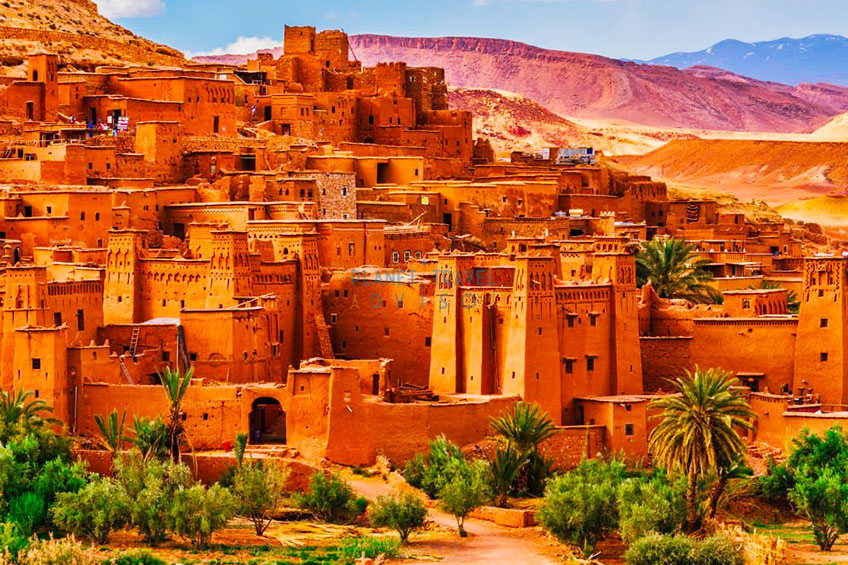
The majestic Atlas Mountains in Morocco offer breathtaking landscapes and incredible trekking opportunities for outdoor enthusiasts and nature lovers. With a range of trails and varying elevations, the Atlas Mountains provide an unforgettable hiking experience. However, it's essential to choose the right season to make the most of your trekking adventure. This section will guide you through the ideal seasons for hiking in the Atlas Mountains.
Spring (March to May):
Spring is considered one of the best seasons for hiking in the Atlas Mountains. During this time, the weather is mild and pleasant, with temperatures ranging from the mid-teens to low 20s degrees Celsius (low to mid-70s degrees Fahrenheit) at lower elevations. The mountains come alive with blooming wildflowers, lush green valleys, and cascading waterfalls. It's an ideal season to explore the lower altitude trails, such as the Ourika Valley or the Ouirgane region. The weather conditions are generally stable, and you can enjoy clear views of the surrounding peaks.
Autumn (September to November):
Autumn is another favorable season for hiking in the Atlas Mountains. The temperatures cool down after the summer, providing comfortable hiking conditions. During this time, temperatures range from the mid-teens to the low 20s degrees Celsius (low to mid-70s degrees Fahrenheit) at lower elevations. The autumn colors paint the mountains with red, orange, and gold shades, creating a picturesque backdrop for your trek. It's a great time to venture into the High Atlas and explore popular trails like Toubkal National Park or the Ait Bouguemez Valley. However, be prepared for cooler temperatures at higher elevations, and check weather conditions before embarking on more challenging hikes.
Summer (June to August):
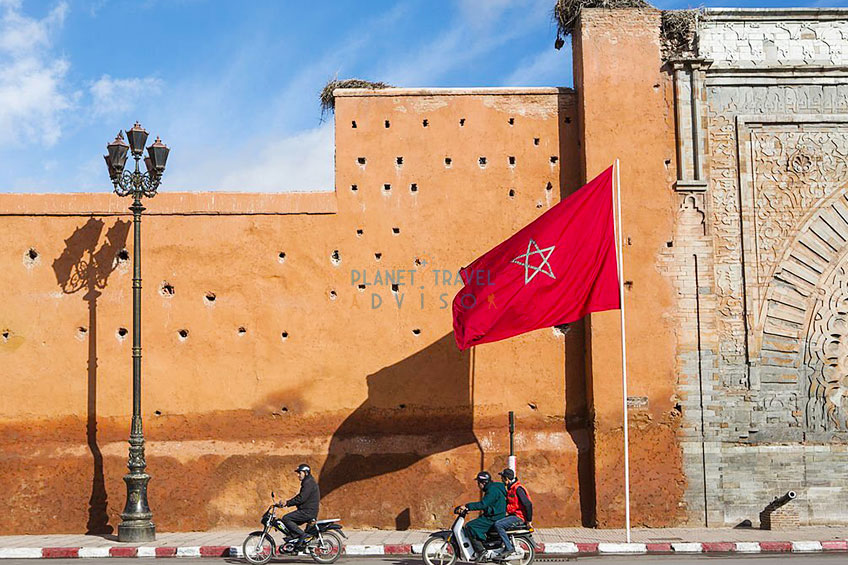
While summer brings warmer temperatures to the Atlas Mountains, it can still be a suitable time for hiking, especially at higher elevations. However, it's important to consider the heat and potential crowds, as summer is the peak tourist season in Morocco. If you plan to hike during summer, choosing higher altitude trails with more relaxed temperatures is recommended. The Toubkal Summit trek, for example, can be attempted during this season, as the temperatures at the summit are generally cooler compared to the lower valleys. It's essential to carry plenty of water, wear appropriate sun protection, and start your hikes early in the morning to avoid the hottest part of the day.
Winter (December to February):
Winter in the Atlas Mountains brings snow and colder temperatures, making it more suitable for experienced hikers or mountaineers seeking a challenging adventure. The higher elevations are often blanketed in snow, creating a stunning winter wonderland. However, trekking during winter requires proper equipment, including warm clothing, sturdy boots, and crampons for icy conditions. Mount Toubkal and other high peaks may require mountaineering experience and technical equipment. It's advisable to consult with local guides or mountaineering experts and be aware of the potential hazards of winter hiking.
It's important to note that weather conditions in the mountains can be unpredictable, and it's always recommended to check weather forecasts and trail conditions before embarking on any hike. Hiring a local guide or joining a guided trekking group can enhance your experience and ensure your safety.
No matter your chosen season, hiking in the Atlas Mountains offers a breathtaking and rewarding experience. The stunning landscapes, traditional Berber villages, and the sense of adventure will leave you with cherished memories of your time in Morocco's magnificent mountain range.
Sahara Serenity: When to Journey into the Desert for a Unique Moroccan Experience
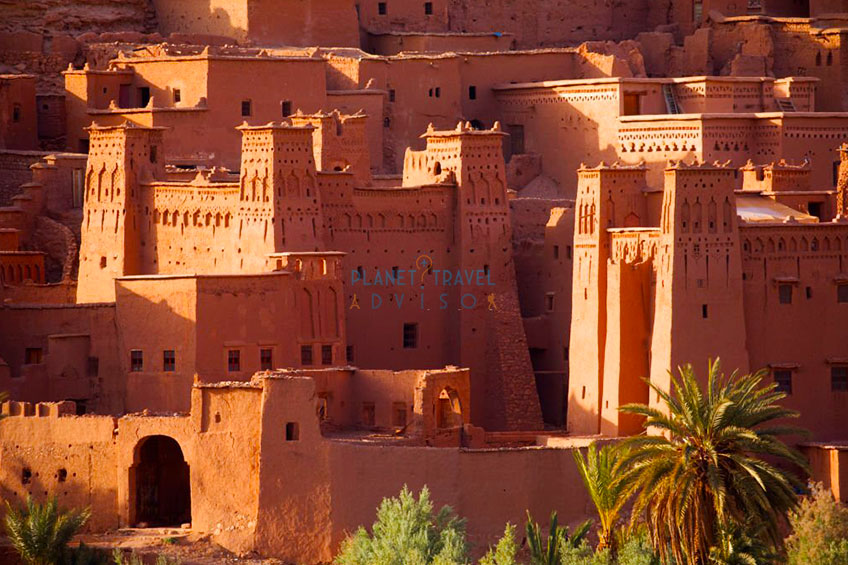
The Sahara Desert is an otherworldly destination that captures the imagination of travelers from around the globe. With its vast golden dunes, tranquil silence, and enchanting starlit nights, the Sahara offers a unique and unforgettable Moroccan experience. However, choosing the right time to journey into the desert is crucial for a comfortable and memorable adventure. This section will guide you through the ideal seasons for experiencing Sahara serenity.
Spring (March to May):
Spring is considered one of the best times to explore the Sahara Desert. During this season, the temperatures are mild and pleasant, ranging from the mid-teens to low 20s degrees Celsius (low to mid-70s degrees Fahrenheit) during the day. The desert comes alive with blooming desert flowers, creating a colorful contrast against the golden dunes. It's an ideal time to embark on camel treks or 4x4 desert tours, as the weather is generally comfortable, and the chances of encountering sandstorms or extreme heat are lower. The nights can be cool, so bring layers to keep warm.
Autumn (September to November):
Autumn is another favorable season to experience the Sahara Desert. After the scorching summer months, the temperatures begin to cool down, ranging from the mid-teens to low 20s degrees Celsius (low to mid-70s degrees Fahrenheit) during the day. The desert landscape is still dry and mesmerizing, providing ample opportunities for exploration and adventure. It's an excellent time to witness stunning sunsets over the dunes and spend magical nights stargazing in the vast desert sky. Be prepared for cooler temperatures during the night and pack accordingly.
Winter (December to February):
While winter brings cooler temperatures to the Sahara Desert, it can still offer a unique and captivating experience for those seeking serenity. During the day, temperatures range from the mid-teens to the low 20s degrees Celsius (low to mid-70s degrees Fahrenheit), but they can drop significantly at night. Winter is a less crowded season in the desert, allowing for a more intimate and peaceful experience. You can witness the beauty of the desert under a different light, with the possibility of encountering snow-capped dunes in the more elevated regions. However, be prepared for colder nights and bring warm clothing and blankets to stay comfortable.
Summer (June to August):
Summer is the peak of heat in the Sahara Desert, and it's not the most comfortable time to visit for most travelers. Daytime temperatures can soar above 40 degrees Celsius (104 degrees Fahrenheit), making exploring and enjoying the desert extremely challenging. The scorching heat and dry conditions pose risks, and it's essential to prioritize your safety and well-being. However, if you visit during this season, opt for overnight desert stays or early morning activities when temperatures are more relaxed. Be sure to stay hydrated, wear protective clothing, and listen to the guidance of experienced desert guides.
It's important to note that weather conditions in the desert can vary, and it's advisable to check the forecast and consult with local guides or tour operators for the most up-to-date information. They can guide you on the best routes and safety precautions, ensuring a well-prepared and enjoyable desert experience.
Whenever you choose to journey into the Sahara Desert, you'll be greeted with its awe-inspiring beauty and tranquility and the opportunity to witness unforgettable sunrises, sunsets, and starry nights. The desert's timeless allure will leave an indelible mark on your Moroccan adventure.
Off-Peak Adventures: Discovering the Hidden Gems and Quieter Side of Morocco
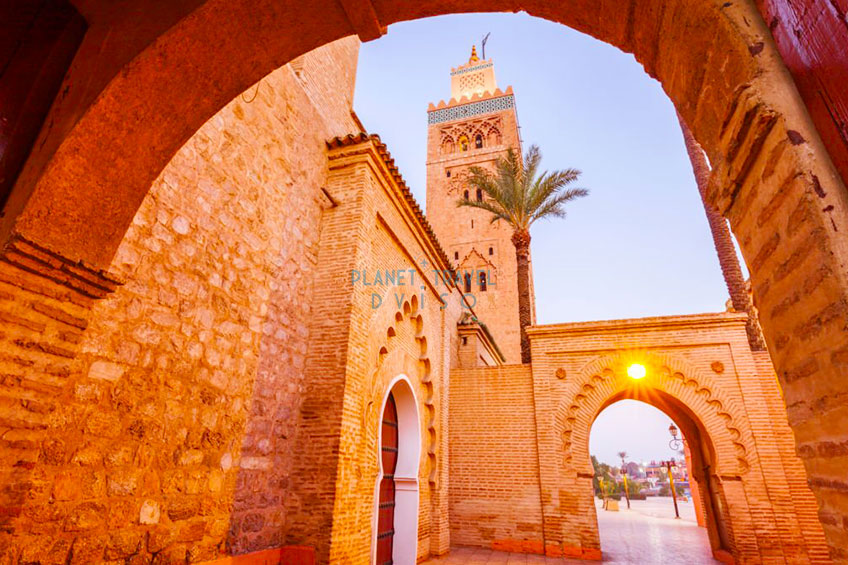
Morocco is a captivating country known for its vibrant cities, rich history, and stunning landscapes. While popular tourist destinations like Marrakech and Fes attract crowds year-round, there is a quieter side to Morocco that offers unique experiences and hidden gems for intrepid travelers. In this section, we will explore the off-peak seasons and lesser-known destinations that allow you to discover the quieter side of Morocco.
Shoulder Seasons (Spring and Autumn):
The shoulder seasons of spring (March to May) and autumn (September to November) are ideal for experiencing the quieter side of Morocco. The weather is generally mild during these months, and tourist numbers are lower compared to the peak summer season. It's a great time to explore cities like Chefchaouen, known for its blue-washed streets and serene atmosphere. The charming coastal town of Essaouira also offers a more relaxed vibe during the shoulder seasons, allowing you to leisurely enjoy its picturesque beaches, historic medina, and fresh seafood. Inland, the Atlas Mountains and their surrounding valleys offer breathtaking landscapes, traditional Berber villages, and hiking trails that are less crowded during these seasons.
Winter (December to February):
Winter is another off-peak season in Morocco, particularly for those seeking a different perspective on the country. At the same time, the coastal regions can still have mild temperatures, while the interior and higher elevations experience cooler weather. This is an excellent time to explore the Sahara Desert, as the tourist numbers are significantly lower than in other seasons. You can embark on camel treks or 4x4 tours to witness the vastness of the desert and spend nights under the starlit sky in peaceful solitude. Cities like Rabat and Meknes also offer historical sites and cultural experiences without the usual crowds, allowing you to delve deeper into Moroccan history and traditions.
Coastal Towns and Hidden Beaches:
Morocco's coastline is dotted with charming towns and hidden beaches that offer tranquility away from the bustling tourist hubs. Towns like Asilah and Sidi Ifni along the Atlantic coast offer a laid-back atmosphere, stunning architecture, and pristine beaches where you can unwind and enjoy the ocean breeze. The Mediterranean coast is home to hidden gems like Al Hoceima and Oualidia, known for their unspoiled beauty and tranquil waters. Exploring these lesser-known coastal towns allows you to connect with the local culture, indulge in fresh seafood, and experience the charm of Morocco's coastal communities.
Video for Morocco's Best Places to Visit Created by World Wild Hearts
Eastern Morocco and the Sahara:
Eastern Morocco, including regions like Erfoud, Merzouga, and Zagora, offers a different perspective on the country. This part of Morocco is known for its dramatic landscapes, expansive deserts, and unique cultural heritage. Exploring the Sahara Desert from this site allows you to encounter smaller desert oases, interact with local nomadic communities, and experience the vastness of the desert without the crowds. You can embark on desert expeditions, visit ancient kasbahs, and witness the raw beauty of this lesser-explored region.
By venturing off the beaten path and embracing the off-peak seasons, you can discover Morocco's hidden gems and quieter side. Whether you explore lesser-known cities, unwind on secluded beaches, or immerse yourself in the tranquility of the desert, these off-peak adventures offer a chance to connect with the authentic soul of Morocco and create truly memorable experiences.
Planning Your Trip: Practical Tips for Navigating Morocco's Seasons and Crowds
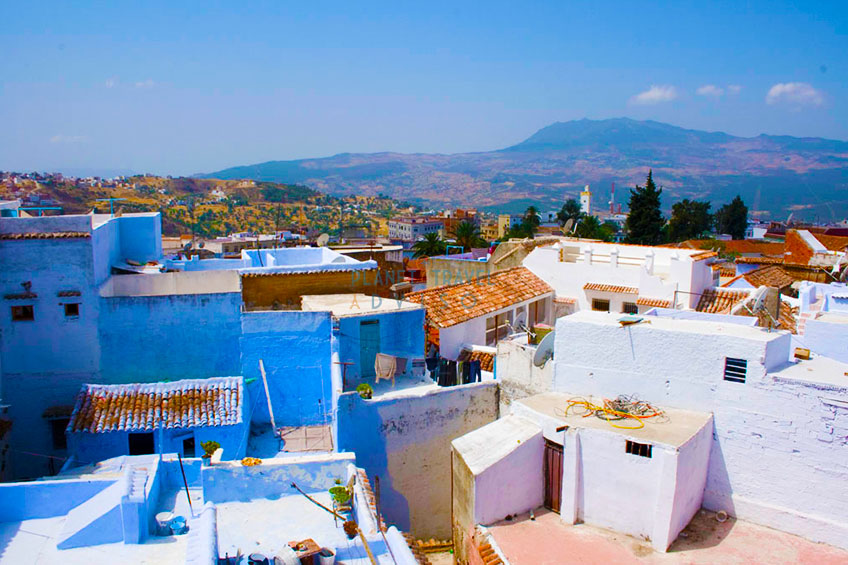
Planning a trip to Morocco requires careful consideration of the country's seasons and crowds to ensure a smooth and enjoyable experience. This section provides practical tips to help you navigate Morocco's seasons and manage crowds during your visit.
Research and Choose the Right Season:
Understanding Morocco's seasons and their impact on weather conditions and tourist crowds is crucial for planning your trip. Consider your preferences and the activities you wish to engage in. Spring (March to May) and autumn (September to November) are generally considered the best times to visit, as the weather is mild, and tourist numbers are lower than the peak summer season. However, if you prefer warmer temperatures and don't mind larger crowds, summer (June to August) can also be an excellent time to visit, especially for coastal and higher altitude destinations. Winter (December to February) is less crowded but can be chilly, particularly in the mountainous areas.
Book Accommodations and Transportation in Advance:
To ensure you have the best choices and secure accommodations that suit your preferences, booking in advance, especially during peak seasons, is advisable. Popular destinations like Marrakech, Fes, and coastal cities tend to get crowded, so securing your accommodation early will give you peace of mind. Additionally, booking your tickets in advance is recommended if you plan to travel by train or bus, particularly during peak travel periods.
Consider Visiting Lesser-Known Destinations:
While popular tourist destinations like Marrakech and Fes offer incredible experiences, they also attract larger crowds. Consider including lesser-known destinations in your itinerary to experience a quieter side of Morocco. Explore charming towns like Chefchaouen and Essaouira or the hidden gems along the coast. Venturing into the Atlas Mountains or the eastern regions of Morocco can also provide a more serene and authentic travel experience.
Embrace Early Mornings and Late Afternoons:
Plan your visits during early mornings or late afternoons to avoid the peak crowds at popular attractions. Many tourists tend to visit attractions later in the morning or early afternoon, so arriving earlier or visiting closer to closing time can give you a more peaceful and enjoyable experience. Additionally, the lighting during these times of day can be more favorable for photography, enhancing your overall experience.
Be Flexible with Your Itinerary:
Flexibility is key when navigating Morocco's seasons and crowds. While it's essential to have a general itinerary, allow for some flexibility to adjust your plans based on weather conditions, unexpected closures, or unexpected opportunities that may arise during your trip. Embrace the spontaneity of travel and be open to new experiences that may come your way.
Engage Local Guides or Join Guided Tours:
Consider hiring local guides or joining guided tours to maximize your trip. Local guides can provide valuable insights, help you navigate crowded areas, and enhance your understanding of Morocco's history, culture, and customs. They can also recommend off-the-beaten-path attractions and help you navigate through different seasons.
Respect Local Customs and Etiquette:
Regardless of the season or crowd levels, respecting local customs and etiquette throughout your trip is essential. Dress modestly, particularly when visiting religious sites or rural areas. Be mindful of local customs and traditions, and always ask for permission before taking photographs of people. Engage with locals respectfully and be open to learning about their way of life.
Considering these practical tips, you can navigate Morocco's seasons and crowds more effectively, ensuring a memorable and enjoyable trip. Remember to plan, stay flexible, and embrace the unique experiences that Morocco has to offer.
Conclusion
Morocco has diverse landscapes, rich history, and captivating cultural experiences. Whether planning to visit in 2024 or 2025, understanding the best time to visit is essential for a rewarding and memorable trip. Throughout this article, we have explored the different seasons, highlighted each season's unique attractions, and provided practical tips for navigating Morocco's weather patterns and crowds.
From the splendor of springtime blooms to the magic of summer adventures, the delights of autumn, and the wonders of winter, each season brings its charm and opportunities for exploration. We have also delved into specific themes, such as attending cultural events, enjoying the coastal charms, hiking in the Atlas Mountains, and embarking on a journey into the Sahara Desert.
Moreover, we have discussed the benefits of discovering Morocco's off-peak and quieter side, including hidden gems and lesser-known destinations that allow for a more authentic and tranquil experience.
Throughout your trip planning, it's essential to consider your preferences, the activities you wish to engage in, and the level of crowds you are comfortable with. By researching and choosing the right season, booking accommodations and transportation in advance, being flexible with your itinerary, and respecting local customs and etiquette, you can navigate Morocco's seasons and crowds effectively.
Morocco offers a unique blend of ancient traditions and modern influences, where bustling cities coexist with serene landscapes. Whether you seek cultural immersion, coastal relaxation, mountain adventures, or a journey into the desert, Morocco has something to offer every traveler.
So, start planning your trip to Morocco and get ready to immerse yourself in the vibrant markets, taste the delectable cuisine, wander through ancient medinas, and experience the warmth and hospitality of the Moroccan people. With proper preparation and an open mind, your journey to Morocco is bound to be an unforgettable experience that will leave you with cherished memories for years.

